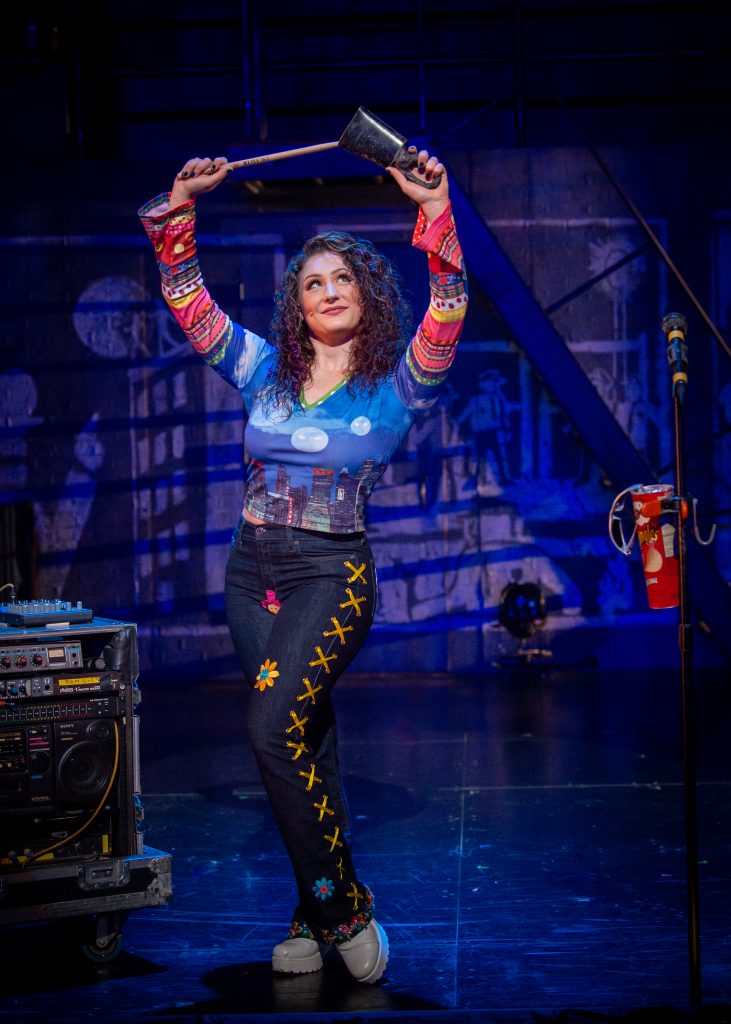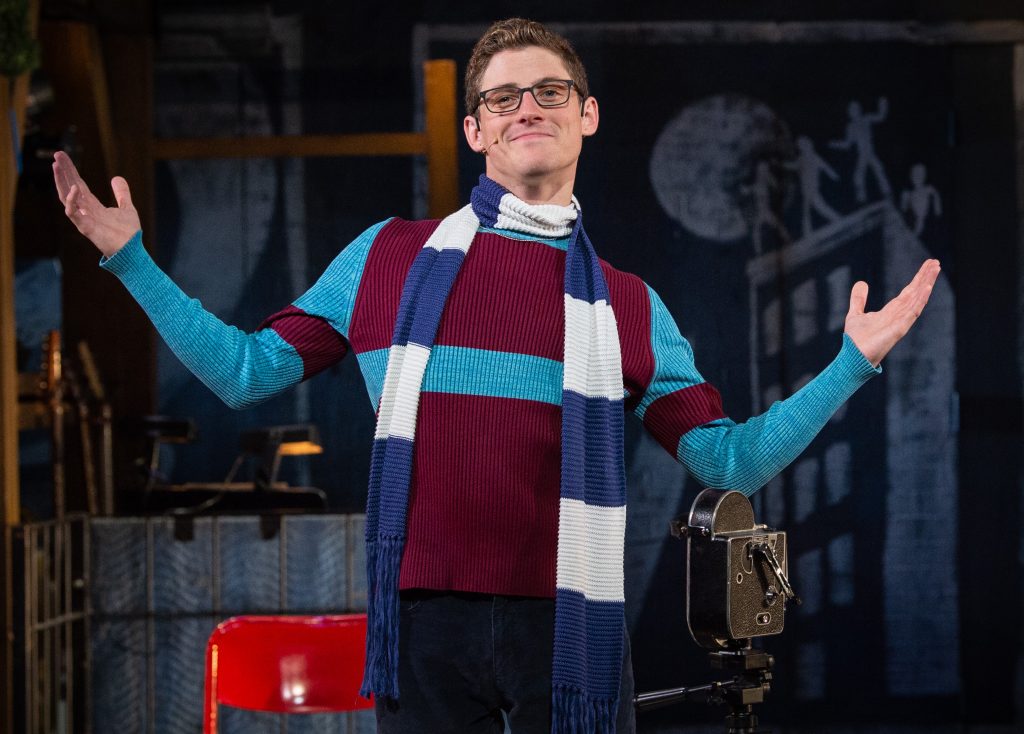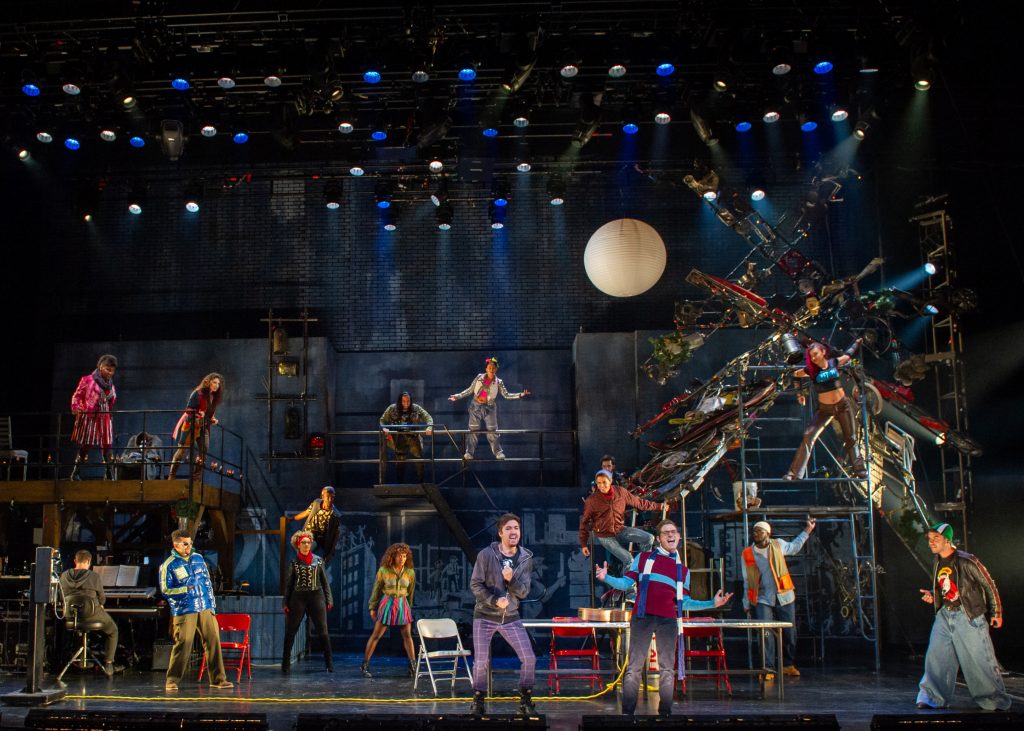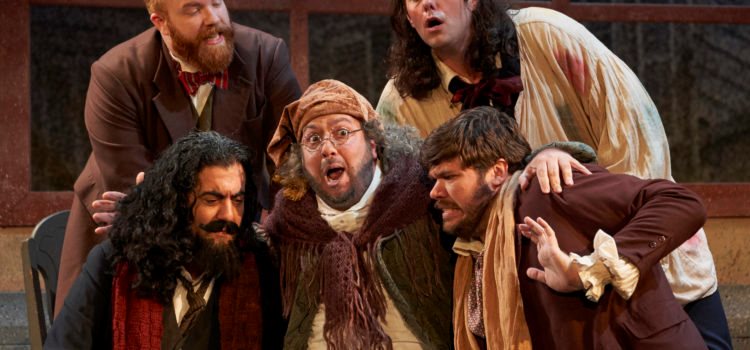By CB Adams
Contributing Writer
What happens when you take Puccini’s La Boheme (The Breakfast Club of its day) out for a sexed-up, drugged-up, angst-amped joy ride through lower Manhattan in the upper decade of the former millennium?
Well, if it’s 24 years ago, it snags a Pulitzer Prize for Drama and the Tony Award for Best Musical while running for an impressive 12 years and grossing more than $280 million.
But what if it’s 24 years later? Do a quick internet search about the 20th-anniversary touring production of Jonathan Larson’s Rent, which opened at the Fabulous Fox on Friday, Feb. 21, and you’ll find a significant amount of critics-sphere dithering about the dreaded R-word – relevance.
Is this Puccini reboot (of sorts) still relevant now that the LGBTQ and AIDS epidemic cultural landscape has shifted in the past two decades — to say nothing of New York City real estate?
On the other hand, is a focus on relevance really that…well, relevant? After all, is Oklahoma and its “surrey with the fringe on top” relevant? Is South Pacific and its hair washing man removal relevant? Will Hamilton still be hip-hoppin’ relevant in 20 years?

The crucible for relevance of any piece of theater (define relevance any way you please) is, ultimately, time. It’s about longevity. It’s about audiences willing – eager even – to engage with a new production of a show and embrace it anew. Within this context, the relevance of Rent, now 20 years on, is proved by its ability to enthusiastically fill seats, which this touring production certainly did on opening night at the Fox Theatre. The audience demographic was “youthier” than some other recent Fox shows, which makes sense because Rent is talkin’ ‘bout that younger generation that bridges the analogue and digital worlds.
The audience was greeted immediately by Paul Clay’s muscular, industrial set design, adapted for this production by Matthew Maraffi, which provided an effective visual environment that evoked the vibe and spirit of (to cross genres) the Dandy Warhols’ “Bohemian Like You.” The lighting was noteworthy, too, appropriately shifting from candle-lit love-mood to spotlighted rock concert stage. Tucked stage right was the lean pit orchestra, led by conductor/keyboardist Mark Binns, which was seamlessly – visually and aurally – integrated into the production. In fact, it was easy to forget they were on stage most of the time.
Rent is a demanding show choreographically speaking. It requires a range of athleticism during numbers such Mimi’s Tina Turner-channeling “Out Tonight” to the company’s languid, funereal “Goodbye, Love.” This production is generally up to that challenge, though Aiyana Smash as Mimi appeared unsure and overly studied during some of her pole-dancing moves while climbing and hanging from the railings during “Out Tonight.” Such hesitancy was quickly forgotten after her tabletop romping later in that number.
Costume Design by Angela Wendt was true to the original and to the 90s era it represented. Costumes were mostly rags that thankfully didn’t veer too deeply into Uriah Heep territory and enlivened with some Jane Fonda workout and Where’s Wally? flourishes. One misstep was the portrayal of the riot police who wore oversized, cartoonish visors, cupped their batons like rural sheriffs and marched like children on parade. That may have been the intent, but it detracted from the emotional reach of their scenes.
The 20th reunion Rent benefits from a strong, deep-bench cast:

Cody Jenkins as Mark Cohen provided the connective tissue throughout as both emcee and cast member. He delivered an admirable range that modulated from affable to earnest and, at-times, angry and callow.
Coleman Cummings delivered a strong but uneven performance as Roger Davis. On numbers that required his “big voice,” his voice was strong, meaty and powerful, but in quieter moments he was ineffectively torpid and lispy, even though Roger is not in good health.
Audience favorite Angel Schunard was Pussy-Galored/Pussy-Glamoured with a cat-like, Jack Skellington-esque aplomb by Joshua Tavares. His drag queen persona rightly drew applause and you-go-girl affirmations, but his quieter, sick and dying scenes were equally as memorable for their quiet power – especially his simulated puking. Schunard had the perfect blend of range and moves for the entirety of this demanding part.
Kelsee Sweigard delivered one of the show’s most impressive performances as Maureen Johnson during the “Over the Moon” performance art number. She played the preposterous “milk in the cyber world” scene with a believable, earnest awkwardness that wasn’t easy to achieve – in the same way playing believably drunk is never easy.
Shafiq Hicks as big-man Tom Collins belted out his deep, resonant, “Old Man River”-tinged voice in all his solos, especially his reprise of “I’ll Cover You.” His best stage moments begged the production make a hard stop – in only good ways – to pay special attention to his performance.
Ditto for Smash as Mimi. Smash’s show-stopping power was evident in equal measures in her dance and singing. Her Mimi shared an impressive spectrum of radiance, assertiveness, horniness, vulnerability and, ultimately, transfigured.
Rent at 24 resonates a little differently than it did in its Broadway and touring heyday. Perhaps at its 30th and 40th anniversaries will find a different relevance, though audiences may need footnotes to explain references to the Sex Pistols, Spike Lee, Ecstasy, etc.
But, as Dale Carnegie (of all people) once wrote, “Your purpose is to make your audience see what you saw, hear what you heard, feel what you felt. Relevant detail, couched in concrete, colorful language, is the best way to recreate the incident as it happened and to picture it for the audience.”
Yeah, Rent does that.

The Fabulous Fox Theatre presented “Rent” February 21-23.

Lynn (Zipfel) Venhaus has had a continuous byline in St. Louis metro region publications since 1978. She writes features and news for Belleville News-Democrat and contributes to St. Louis magazine and other publications.
She is a Rotten Tomatoes-approved film critic, currently reviews films for Webster-Kirkwood Times and KTRS Radio, covers entertainment for PopLifeSTL.com and co-hosts podcast PopLifeSTL.com…Presents.
She is a member of Critics Choice Association, where she serves on the women’s and marketing committees; Alliance of Women Film Journalists; and on the board of the St. Louis Film Critics Association. She is a founding and board member of the St. Louis Theater Circle.
She is retired from teaching journalism/media as an adjunct college instructor.


